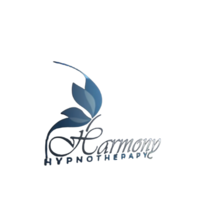Resolving Addiction at its Source

At the root of all addiction is an underlying unresolved emptiness – usually formed unconsciously in childhood. Unless this underlying root cause is addressed, resolved and dissolved, the addiction will either return, or morph into another form of addiction, destructive habitual behavior or other unwanted urges.
Gabor Mate (2009), a global leader in addiction research and practice explains, “Addictions always originate in pain, whether felt openly or hidden in the unconscious.” Mate goes on to explain, “The question is never “Why the addiction?” but “Why the pain?”” Through my own practice, treating virtually every kind of addiction or what I call “unwanted urges”, I have proven this theory not only true – but key in resolving and dissolving addictive behavior at a revolutionary level.
Whether the affliction is alcohol, smoking or nail biting, beneath the surface lies a deep-seated emptiness – a fundamental disconnection from a core emotional need, such as the need to feel protected or connected. A deep void has been created, often before the age of reason, which once formed feeds on itself, creating circumstances that deepen the crevasse.
For example, a young child who felt unloved, unwanted and isolated due to experiencing or witnessing emotional or physical abuse, will often form relationships from that moment onward in which they feel all of the same emotions.
They normalize this type of dis-connection. Then they continue to form unfulfilling connections until they address the source of the void. They arrive on my doorstep an “addict” when addiction is simply a symptom of the problem.
If I was to address just the addiction, using common techniques such as aversion, the addiction may stop, but only for a while. It will either return when the underlying cause feelings are triggered – or it will be replaced with another compulsive urge to fill the void.
Therefore, when I work with smokers I never mention smoking – I instead guide the “smoker” to uncover and recover the emptiness within that drove the urge to fill the gap. Once this occurs, the client will notice the same pattern of unfulfilling choices in their current circumstances, and this is how the unwanted urge is sustained. From there, they are able to consciously acknowledge their choices, to see how and why those choices were made, and to from that moment onward build an environment around them that supports and fulfils them.
The gap is filled. The emptiness is dissolved. And what felt like an uncontrollable and compulsive urge is no longer there.
REFERENCES
Maté, Gabor (2009) In the Realm of Hungry Ghosts. Close Encounters with Addiction. Vintage Canada.
Hari, Johann (2015) Everything You Think You Know About Addiction is Wrong. Ted Global. London. Downloaded 21st September, 2019 from https://www.ted.com/talks/johann_hari_everything_you_think_you_know_about_addiction_is_wrong?language=en#t-555079
Hari, Johann (2018) Lost Connections. Uncovering the Real Causes of Depression and the Unexpected Solutions.
Leave a comment
Comments will be approved before showing up.





Lyn Macpherson
Author